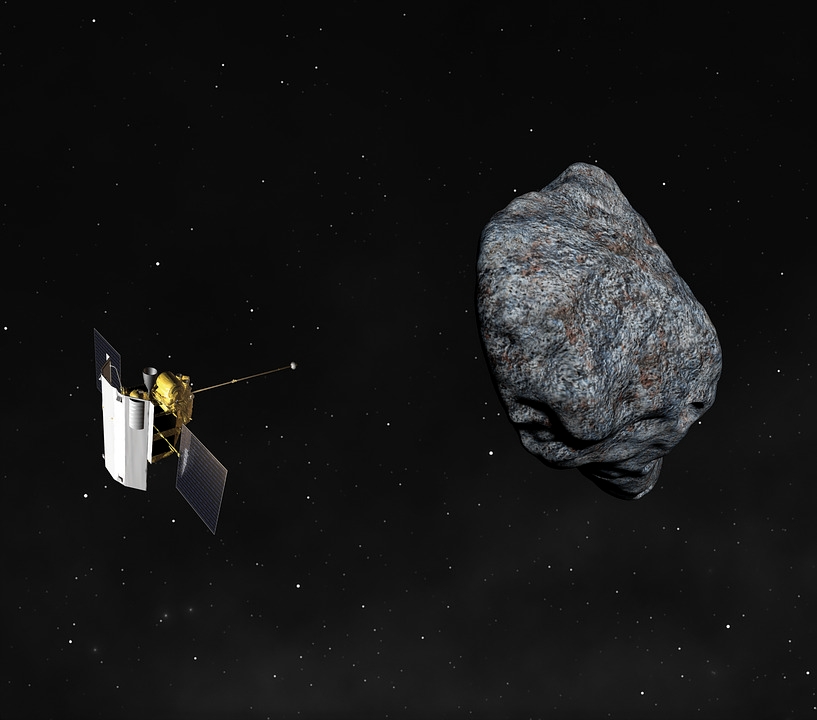Asteroids may appear to be mere debris floating through space, but these rocks are also useful for astronomers to further understand the history of our universe. Japan’s space agency made history recently when a capsule from the Hayabusa2 spacecraft finally returned to Earth containing samples from the asteroid Ryugu.
The capsule from the Hayabusa2 spacecraft by the Japan Aerospace Exploration Agency or JAXA made a landing in Australia over the weekend. The capsule contained samples from one of the asteroids that are being monitored, the asteroid Ryugu. 10 kilometers above our atmosphere, the capsule released a parachute and beacon signals for officials to determine its position as it made a landing in the Woomera wilderness. JAXA’s helicopter search team was able to retrieve the capsule in the predicted landing spot two hours after its re-entry into Earth.
The Hayabusa2 capsule’s safe return to Earth marks a successful mission for the Japanese space agency. This is also in the hope of finding out more information about the origins of our planetary neighborhood as well as the possible cause of life on Earth. The Hayabusa2 spacecraft already left Ryugu in 2019. Upon JAXA’s confirmation that it has retrieved the capsule, officials from the US agency NASA congratulated the agency’s successful mission. JAXA astronaut Soichi Noguchi also tweeted being able to witness the capsule’s descent to Earth from the ISS.
“Together, we’ll gain a better understanding of the origins of our solar system & the source of water & organic molecules that may have seeded life on Earth,” tweeted Dr. Thomas Zurbuchen, the associate administrator of NASA’s Science Mission Directorate.
From one asteroid to another, a mysterious space object referred to as 2020 SO flew past Earth last week on December 1. 2020 SO was long suspected not to be a space rock, and NASA recently confirmed the suspicions. The agency revealed that 2020 SO was not an asteroid but actually a part of the Centaur rocket booster of the Surveyor 2 probe that was launched in 1966. The agency collected data from the Infrared Telescope Facility as well as the orbit analysis data from the Jet Propulsion Laboratory and the Center for Near-Earth Object Studies to determine the object’s orbit.



 The brightest object in the universe is a black hole that eats a star a day
The brightest object in the universe is a black hole that eats a star a day  Genetic diseases: How scientists are working to make DNA repair (almost) a piece of cake
Genetic diseases: How scientists are working to make DNA repair (almost) a piece of cake  How do airplanes fly? An aerospace engineer explains the physics of flight
How do airplanes fly? An aerospace engineer explains the physics of flight  Why is the universe ripping itself apart? A new study of exploding stars shows dark energy may be more complicated than we thought
Why is the universe ripping itself apart? A new study of exploding stars shows dark energy may be more complicated than we thought  The mystery of consciousness shows there may be a limit to what science alone can achieve
The mystery of consciousness shows there may be a limit to what science alone can achieve  Black hole, neutron star or something new? We discovered an object that defies explanation
Black hole, neutron star or something new? We discovered an object that defies explanation  If life exists on Jupiter’s moon Europa, scientists might soon be able to detect it
If life exists on Jupiter’s moon Europa, scientists might soon be able to detect it  IceCube researchers detect a rare type of energetic neutrino sent from powerful astronomical objects
IceCube researchers detect a rare type of energetic neutrino sent from powerful astronomical objects  Six space missions to look forward to in 2024
Six space missions to look forward to in 2024  Could a telescope ever see the beginning of time? An astronomer explains
Could a telescope ever see the beginning of time? An astronomer explains  Synthetic human embryos let researchers study early development while sidestepping ethical and logistical hurdles
Synthetic human embryos let researchers study early development while sidestepping ethical and logistical hurdles  Spacesuits need a major upgrade for the next phase of exploration
Spacesuits need a major upgrade for the next phase of exploration  The Mars Sample Return mission has a shaky future, and NASA is calling on private companies for backup
The Mars Sample Return mission has a shaky future, and NASA is calling on private companies for backup  Archeoastronomy uses the rare times and places of previous total solar eclipses to help us measure history
Archeoastronomy uses the rare times and places of previous total solar eclipses to help us measure history  Dark matter: our new experiment aims to turn the ghostly substance into actual light
Dark matter: our new experiment aims to turn the ghostly substance into actual light 






























